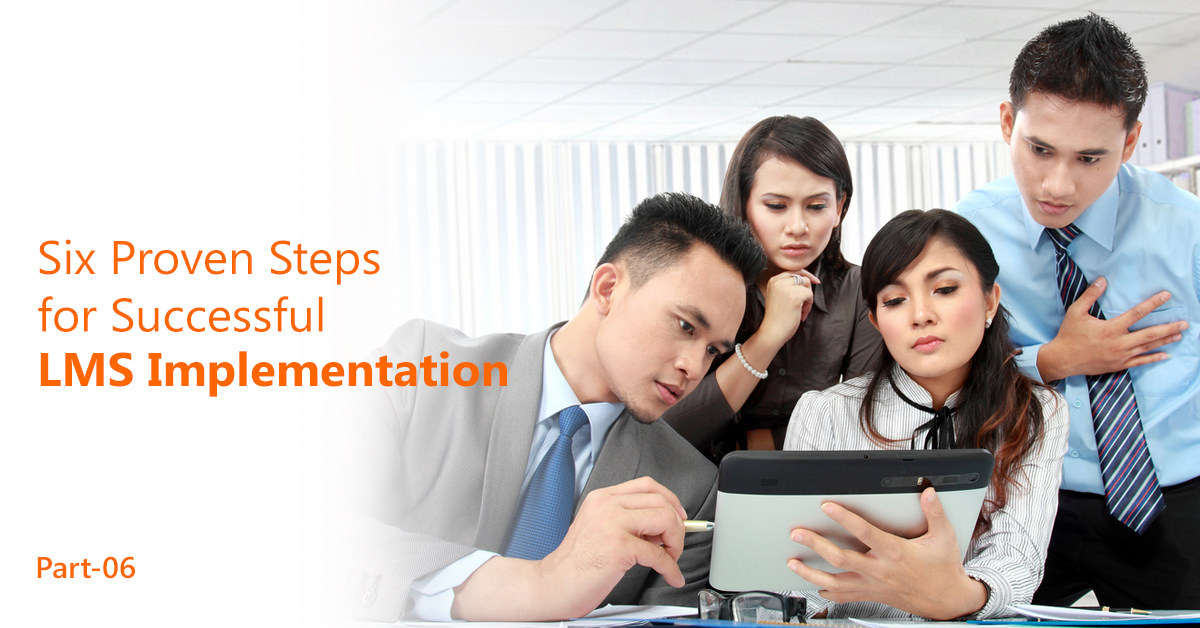The 6th step of successful implementation of a Learning Management System is to Go Live. The final step to conclude the LMS implementation process requires attention to detail. It demands the team to brainstorm on numerous risks and have a contingency plan to mitigate each risk.

Subsequently, you must notify the course owners and administrators of the go-live date in advance. This will help them plan and schedule their important training programs in accordance with the go-live schedule of the new LMS.
On this Page
Prepare to offer a helpdesk
Preparing a helpdesk script for your support staff will help them answer questions and respond to the queries of the end users. This script can include a list of various anticipated topics related to LMS operations and functionalities. You must also guide your support staff and describe how they can respond to customer queries with the help of the script. For example, how to login to the LMS, how to recover a password, how to register for a course, etc. Establish a process to escalate certain issues to a person/department when the support team is unable to resolve the issues of the end users. This can also include a few fields in the form related to the information required for escalating the problem.
Before you go live with the new LMS, ensure that you perform the necessary checks during the blackout period for effortless implementation of the new LMS.
What is a Blackout Period?
This is the time when neither your old system is functional nor is newly implemented LMS available or accessible. During this ‘blackout period’, we recommend that you shut down the old system/LMS and perform the delta data migration process. Check the data and functionality in the new LMS and redirect the old system’s web address to the new one. If you find any errors or bugs that are not fixed, you will have to reactivate the old system and postpone the go-live date until the issues are diagnosed and resolved.
Conclusion
Now that have covered all the six crucial steps of successfully implementing an LMS, it is evident that this is a rigorous and resource-intensive process, requiring some level of customization as per the organization’s needs before it can be considered implementation-ready. It is rare that all the features of an LMS are suitable for the needs of an organization and so, this makes it important to properly evaluate an LMS at the time of selecting the product.
Hence, with the use of appropriate resources and planning, and attention to detail, your new LMS can serve you for years and prove to be a good investment.
Following is the complete list of steps essential for successful implementation of an LMS:
- Step-01: Planning
- Step-02: Configuration
- Step-03: Integration
- Step-04: Migration
- Ste-05: Testing
- Step-06: Go Live
For all your LMS implementation related queries, connect with us today!

